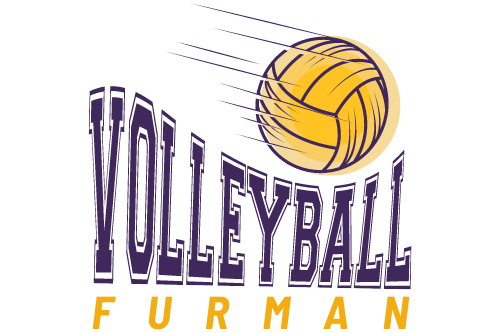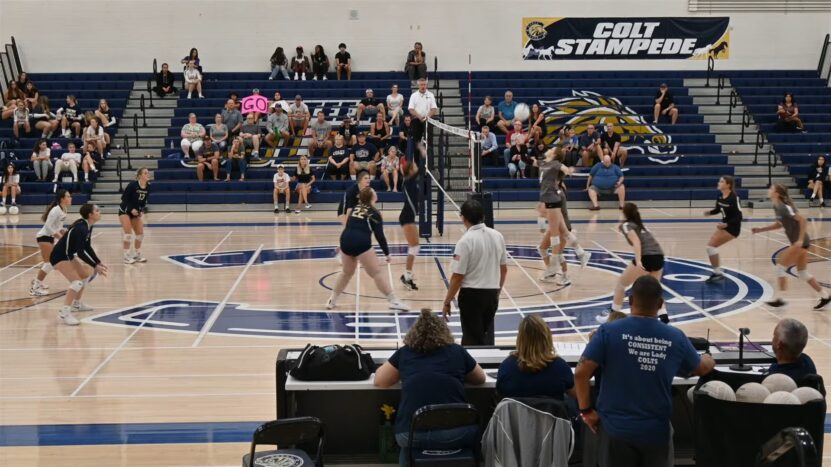Volleyball is a dynamic and exciting sport that captivates players and spectators alike. It requires not just physical agility and strength but also strategic thinking and teamwork.
Each player on the court plays a critical role, with specific responsibilities that contribute to the team’s overall success. In this guide, we’ll explore all the positions in volleyball, breaking down their roles, skills, and strategic importance.
Key Takeaways
- In volleyball, there are six main positions, each with its unique set of duties on the court: Setter, Outside Hitter (also known as Left Side Hitter), Opposite Hitter, Middle Blocker, Libero, and Defensive Specialist.
1. Setter
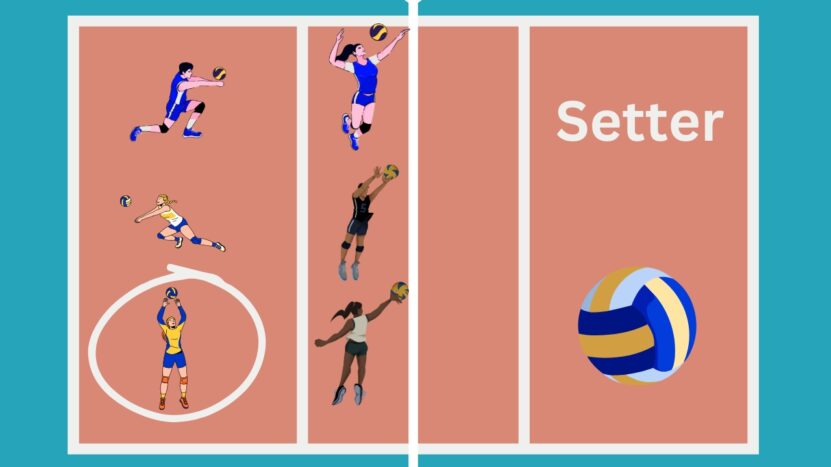
The setter is often referred to as the “quarterback” of the volleyball team. This position is crucial for orchestrating the team’s offense by setting the ball for attackers. A good setter must have:
- exceptional ball-handling skills,
- a sharp mind for strategy,
- and the ability to make quick decisions.
They must read the defense and distribute the ball to the hitters effectively, setting the pace and direction of the game.
What They Do
In addition to their on-court duties, setters often serve as leaders, constantly communicating with their teammates to adjust strategies and formations.
Their role requires not only physical skill but also psychological insight to motivate the team and maintain focus under pressure.
Understanding each hitter’s strengths and weaknesses allows the setter to customize sets, making the offense more dynamic and unpredictable.
2. Outside Hitter
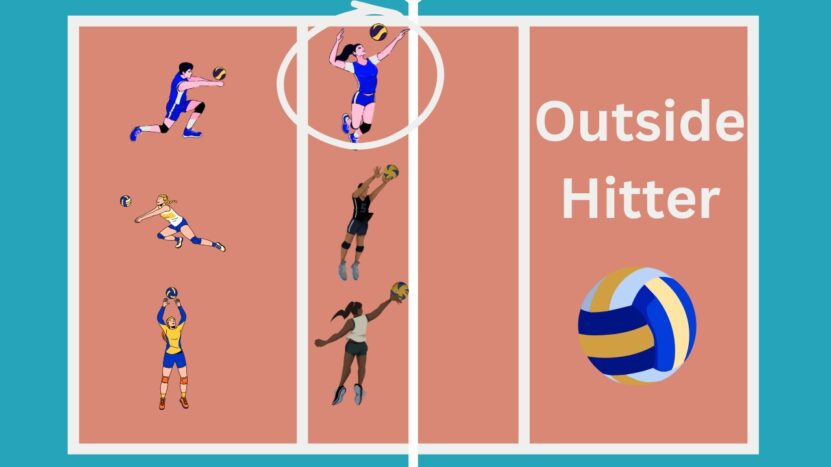
The Outside Hitter, positioned on the front left side of the court, is typically the team’s most versatile attacker. They need to excel in both hitting and passing. These players are often relied upon to receive serves and are involved in a significant portion of the team’s offensive plays. A strong outside hitter possesses:
- powerful and accurate hitting abilities,
- good ball control,
- and the agility to cover a wide area of the court.
They must also demonstrate resilience, often facing the toughest serves and making split-second decisions during plays.
What They Do
Effective outside hitters are adept at finding gaps in the opponent’s defense, using their analytical skills to exploit weaknesses. Their role is not just to attack but also to serve as the first line of defense, making successful passes to initiate the counterattack.
3. Opposite Hitter
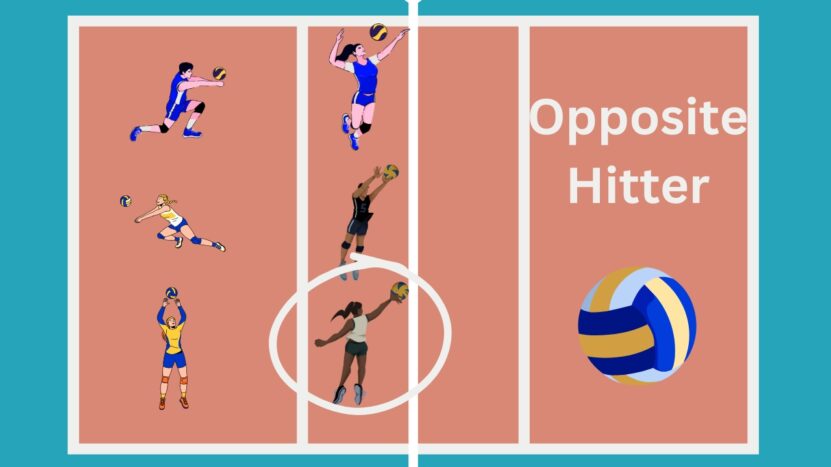
Stationed on the right side of the court, the Opposite Hitter is a key player in both offense and defense. This position requires a player with:
- a strong arm for hitting and serving,
- the ability to block effectively.
What They Do
They often serve as the primary blocker against the opponent’s outside hitters and are responsible for attacking from the right side. The opposite hitter must be adaptable, as they play a critical role in countering the opposing team’s attacks.
They also serve as a backup setter, showcasing their versatility and strategic importance on the court. The ability to perform well under pressure is crucial, as opposite hitters often face critical moments during matches.
Their powerful serves can shift the momentum, making them invaluable in tight situations.
4. Middle Blocker
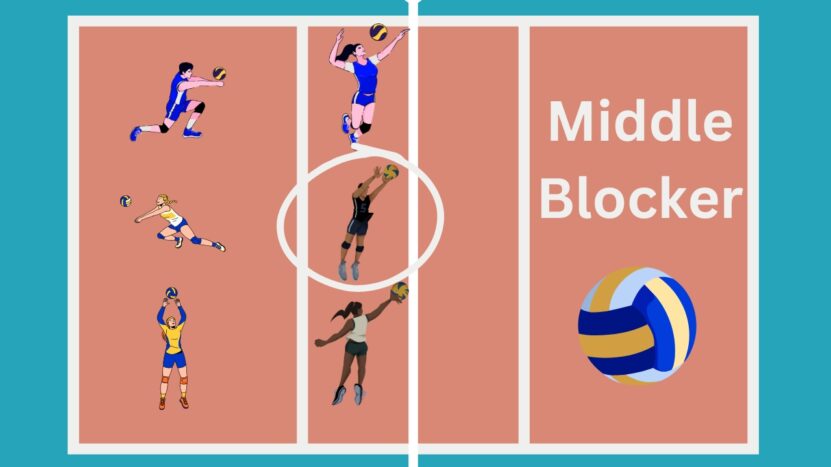
The Middle Blocker is the team’s defensive linchpin, positioned at the net to stop the opposing team’s attacks. Middle Blockers need to have:
- excellent timing,
- powerful jumping ability,
- and quick reflexes.
What They Do
They must jump high to block hits and serve as a quick and efficient attacker when the ball is set to them. Their ability to read the game and anticipate the opponent’s moves is vital for a successful defense.
They are the central figure in the team’s blocking strategy, coordinating with other players to form an impenetrable defense.
Middle blockers also contribute offensively, using their height and power to execute quick attacks and put pressure on the opponent’s defense.
The position demands a high level of athleticism, as middle blockers must move swiftly across the net to participate in blocks and attacks.
5. Libero
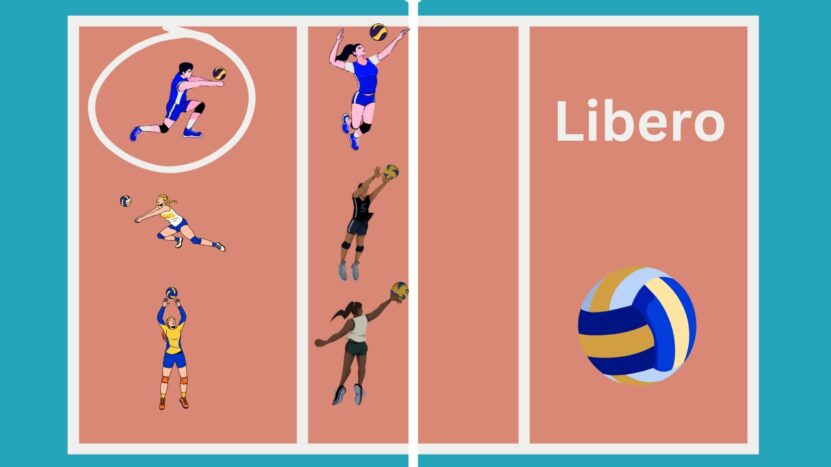
The Libero is a defensive specialist, easily recognizable by their different colored jersey. This player cannot attack or block and is restricted to the back row of the court. They must have:
- quick reflexes,
- excellent ball control,
- and the ability to read the game, making them crucial for turning the tide in defensive rallies.
What They Do
The Libero’s primary role is to enhance the team’s defense through exceptional passing and digging skills. Their role allows for unlimited substitutions, providing a strategic advantage in maintaining a strong defense.
Liberos also serve as leaders in the backcourt, directing the defensive setup and encouraging teammates. They often take on the responsibility of serving as the team’s emotional anchor, keeping spirits high and maintaining focus during long rallies.
6. Defensive Specialist
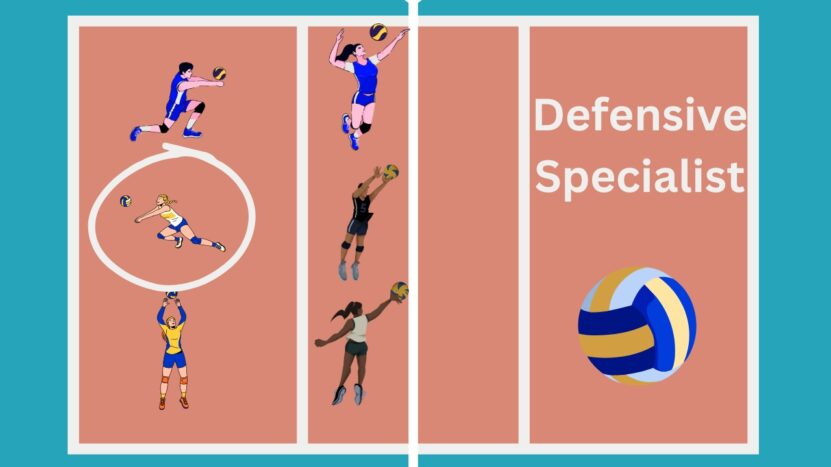
Similar to the Libero, the Defensive Specialist focuses on back-row play but without the same restrictions. They can substitute for any back-row player, providing flexibility and strength in defense. This position demands players who are:
- quick on their feet,
- skilled in serve receive and defense,
- and capable of delivering accurate passes to the setter.
What They Do
Defensive Specialists are essential for teams looking to bolster their defense without compromising on offensive capabilities. They often specialize in serve receive, helping to alleviate pressure on the primary passers.
Their adaptability allows coaches to strategize against opponents’ strong servers, ensuring the team remains competitive during crucial points.
The role of a Defensive Specialist is multifaceted, requiring a deep understanding of the game and the ability to perform under pressure, making them a key asset in any volleyball team’s lineup.
FAQs
What determines a player’s position in volleyball?
A player’s position is determined by their skill set, physical attributes, and the strategic needs of the team. For example, taller players with strong jumping abilities might be directed towards roles like Middle Blocker, while players with excellent ball control and defensive skills might be suited to the Libero position.
Can a player change positions during a match?
While players can move around the court and perform different actions, their designated positions (like Setter or Libero) generally dictate their primary responsibilities and rotations during a match.
Substitutions and positional changes are strategic decisions made by the coach.
Is the Libero allowed to serve?
In international play, the Libero is not allowed to serve. However, some leagues and levels of play, such as high school volleyball in the United States, do allow the Libero to serve in one rotation.
Why do teams need an Opposite Hitter?
Teams need an Opposite Hitter to balance their offensive and defensive capabilities. The Opposite Hitter is crucial for attacking from the right side, blocking opponents’ outside hitters, and serving as a counter-attacking force, providing strategic versatility to the team.
How does a Middle Blocker contribute to the team’s offense?
Besides their primary role in defense, Middle Blockers contribute to the offense by executing quick middle attacks, making them an unexpected threat. Their ability to quickly transition from blocking to attacking can catch the opposing defense off guard.
What makes a Defensive Specialist different from a Libero?
While both positions focus on defense, a Defensive Specialist does not have the same rotational restrictions as a Libero and can serve. This role provides teams with additional flexibility in their defensive lineup and serve receive formation.
Summary
In volleyball, each position plays a crucial role in the team’s success. The Setter acts as the strategic leader, coordinating plays and setting up attacks. Outside and Opposite Hitters are key to the team’s offensive strategy, with powerful hits and blocks.
Middle Blockers are the defensive backbone, stopping opponents’ attacks with their blocks. The Libero and Defensive Specialist enhance the team’s defense with their exceptional passing and digging skills.
Understanding these roles provides insight into the strategic depth and dynamic nature of volleyball.
